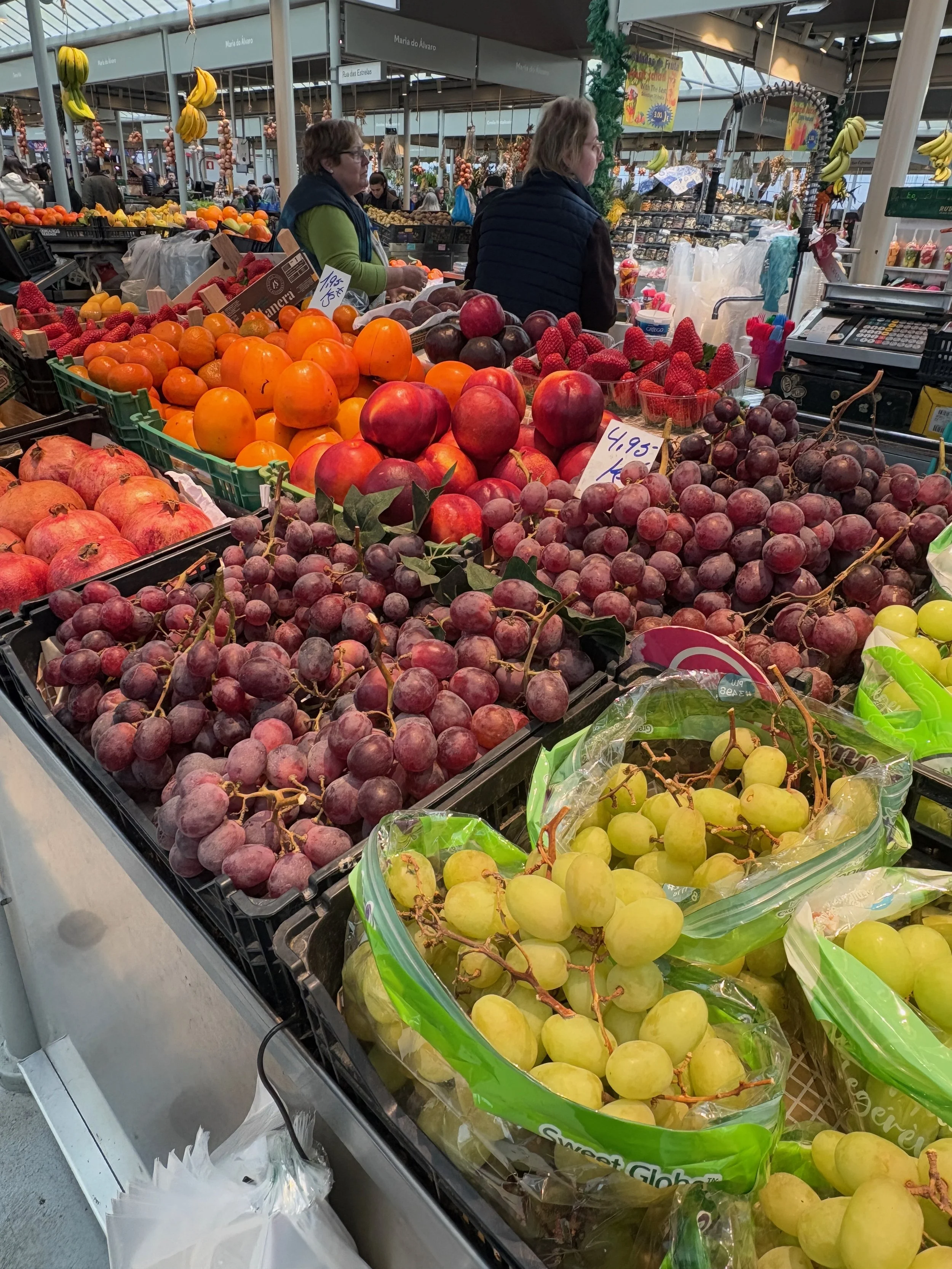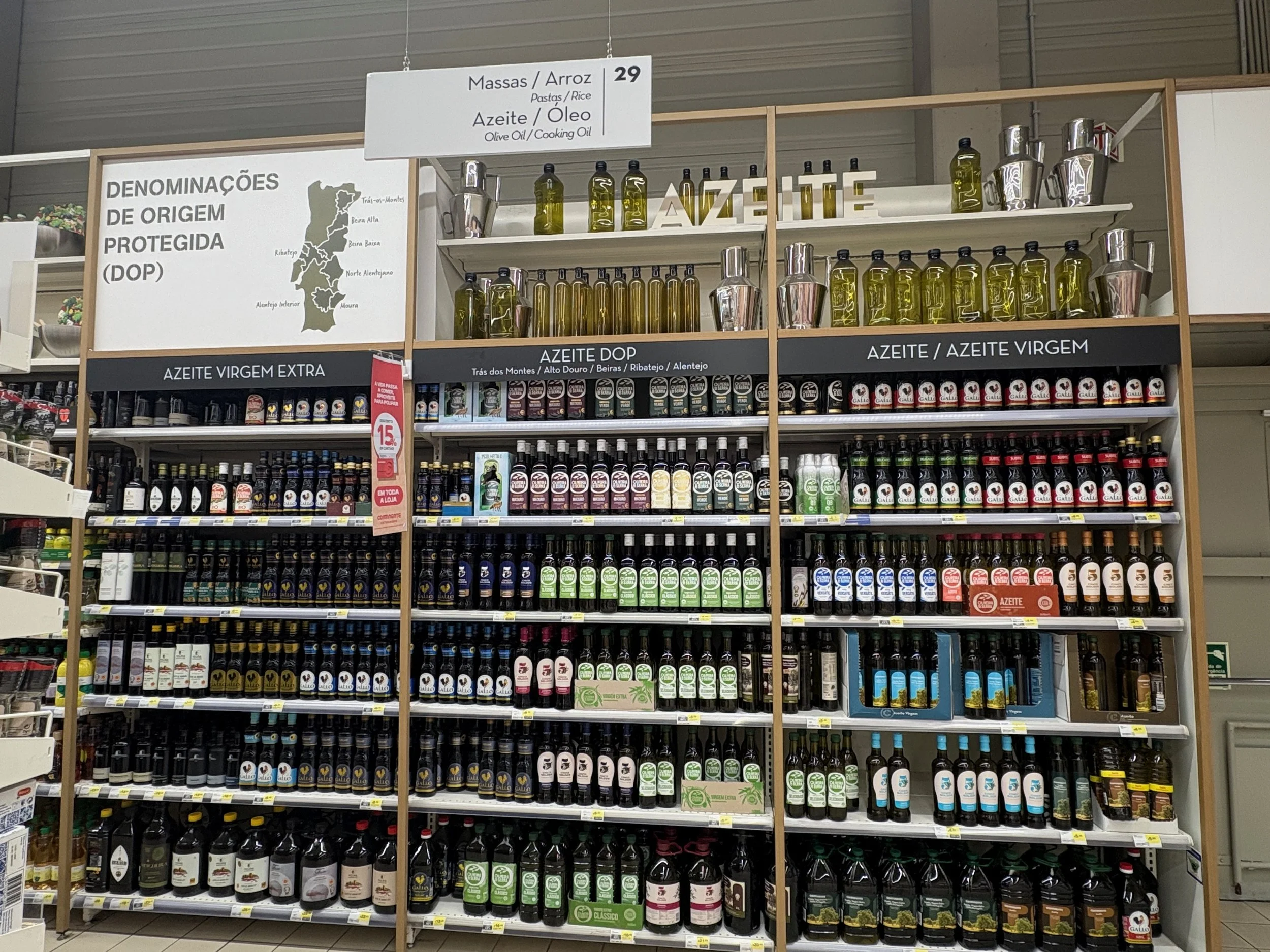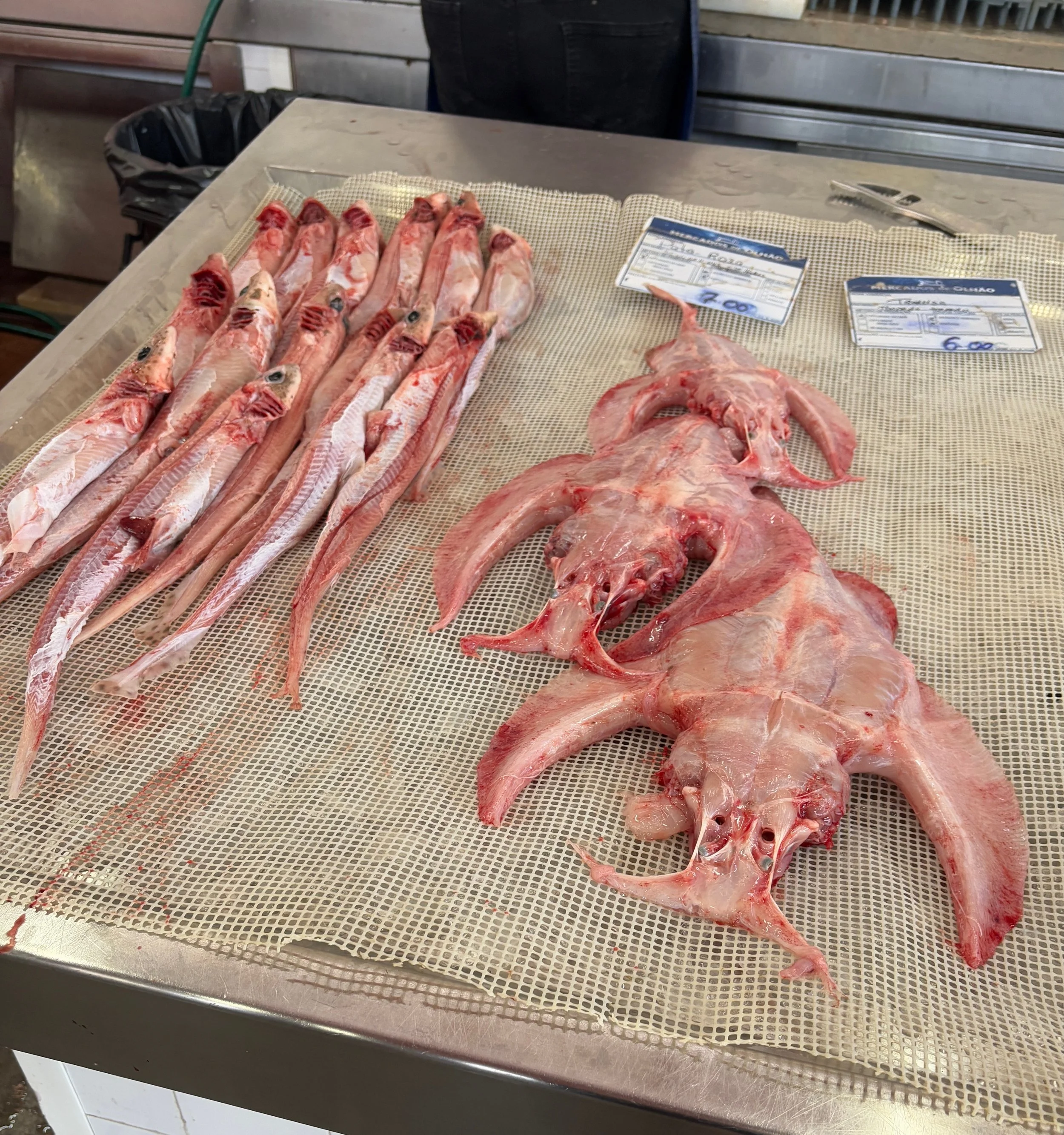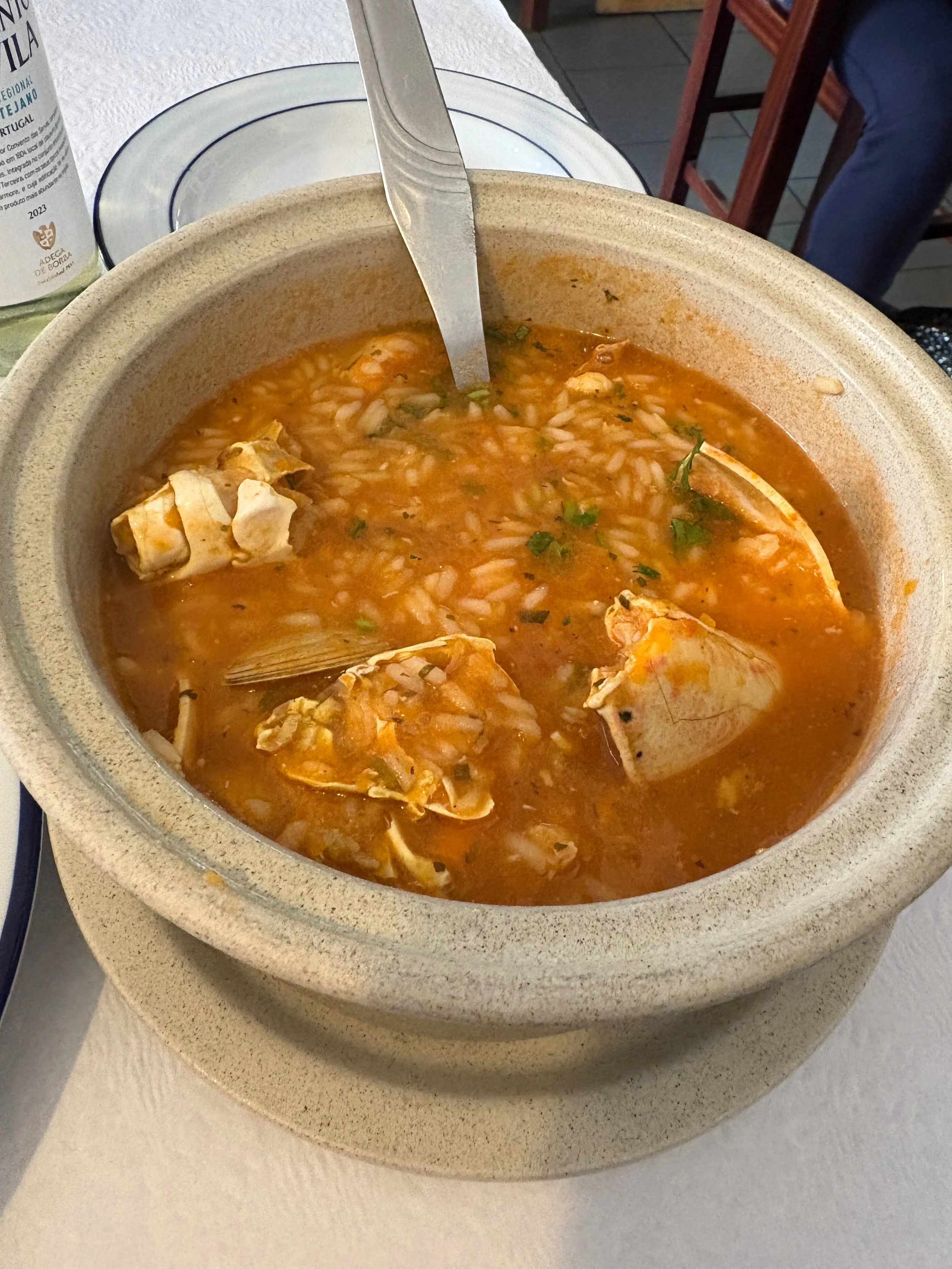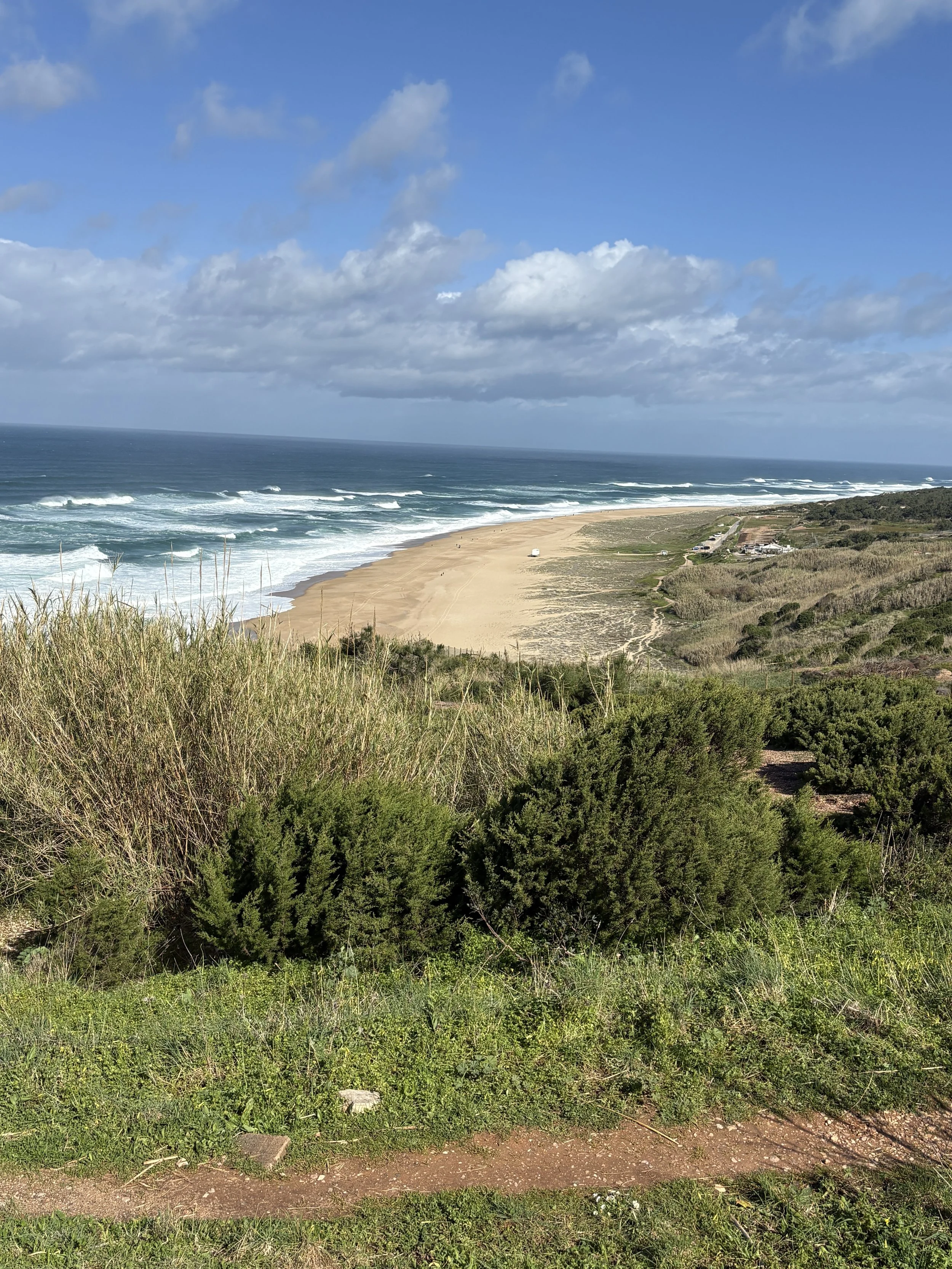Three Months in Portugal
Greetings from Wales! We’ve been here for a week now and are absolutely loving it. But before we get too immersed in pubs, pints, and puddings, we need to wrap up our three months in Portugal. We had three distinctly different experiences in our month long stays from northern to southern Portugal. Follow along as we review how Portugal scored on our rating system for both short and long stays.
Cost
The beautiful walled city of Obidos
I will caveat this section strongly. This is based on our experience as Americans, who earn an American salary, and in comparison to the cost of living in the Midwest of the United States. Compared to other countries in Western Europe, and certainly compared to the overall cost of living in the United States, Portugal is very affordable. It is important to note though that the average Portuguese salary is lower than much of Western Europe and significantly lower than in the United States. And like everywhere it seems, inflation and increasing housing prices are putting the squeeze on people in Portugal. So it is all relative, depending on where you come from.
That said, our US dollar definitely stretched much farther in Portugal than it did in Mexico! Our airbnb prices were well below our monthly budget for high quality condos. Grocery prices were generally about 40% lower than we were used to in the US, particularly since we often shopped at Whole Foods in the US. A bottle of our favorite wine was $4-$5USD. Eating out at a mid-range restaurant averaged $50-$70 USD. That usually included an appetizer, 2 entrees and 2-4 alcoholic drinks (depending on the day!). Keep in mind that tipping isn’t common here, and that included tax. Particularly in the smaller cities, Portugal can be very affordable for Americans on vacation!
Rating: 10/10!
Weather
The rain brings along the rainbows!
We spent our time in Portugal from February to May, so it covered both the winter and spring seasons. Tourist season really kicks up in late spring and summer when it is hot and sunny. That said, I’ll take the mild winter and early spring in Portugal over the same months in the midwest US any day! Southern and Western Europe had a wetter than normal Spring, and we had a lot of rain for sure. February and March averaged about 55-60F for highs and we probably had rain 50% of our time. In April and May we were up to 65-70 and a lot more sun. We were even able to break out our shorts by the end of the stay!
Rating: 8/10. Bring an umbrella, a rain jacket, and lots of layers!
Walkability
The beautiful, but slippery walkways in Olhão
Taking long daily walks is an in important part of our lives. 1) it keeps us healthy 2) we get to see daily life in our cities 3) it fills up our time. Even when we’re on vacation, we want to be in a city where we can walk everywhere instead of having to take cabs or ubers. Our experiences in Portugal varied by the cities we were in. One thing that didn’t vary though were the cobblestones. While often beautifully decorated, they can be tough on the ankles and slippery when wet (BonJovi reference?).
Porto - We walked everywhere in Porto and never took the metro or other public transportation. We took a few Ubers to the main train station, but otherwise we walked everywhere. It is important to remember that the city is built into hills. Point your way downwards and you’ll find the river…but remember you have to go back up to get back where you came from! Sidewalks here were decent, other than the annoying habit of cars parking on the sidewalks! There are a lot of pedestrian crossings, and a good number of streets that are pedestrian only. Rating: 8/10
Nazaré - Nazaré is small and easily walkable. There is a great boardwalk that lines the beach that we walked on daily. The major supermarkets are up hill and slightly out of town, but we made the journey once a week or so. The only challenge was that there weren’t always sidewalks along the major roads to the grocery store. Rating: 8/10
Olhão - We didn’t love walking in Olhão. The sidewalks were very narrow and not in great shape. Again, the cars park on what sidewalks there are. And you have to dodge the doggie doo doo. It was small enough for us to walk to all of the restaurants and grocery stores, it just wasn’t as enjoyable! Rating: 4/10
Food
Food was a mixed bag for us in Portugal.
The Pros: The produce in the local markets and even the supermarkets was incredible. Eating a fresh red pepper or carrot was like experiencing those flavors for the first time, and made the produce in the US seem like bland nothingness. Also, as a country where half of its borders are on the sea, the seafood and fish was incredible. We started to hit our stride in Portugal in terms of shopping for groceries daily and cooking most meals at home.
The Cons: We didn’t love traditional Portuguese food. There, I said it. When we went out to restaurants we found ourselves seeking out cuisines from other cultures like pizza and burgers. Also, Eric and I both have some food intolerances that require us to read labels in grocery stores and cross our fingers at restaurants in the hope that they do mostly scratch cooking. Before we got to Portugal we read infogram after infogram about how Porgtugal has some of the lowest consumption of processed foods in Europe. We were optimistic that we wouldn’t have issues. Frustratingly we did not find that to be the case.
Rating: 5/10
Language/communication
When we told people that we were planning to be in Portugal for three months, we commonly were asked if we spoke Portuguese. Nope! But thankfully, Portugal depends heavily on tourism, and no one from other countries (other than Brazil!) speak Portuguese either! That meant that we found English to be widely spoken, particularly among people under 40. At every restaurant we went into we could communicate to the staff in English well enough to place our order. We used Google Translate at the grocery store pretty regularly (to read those food labels!).
I will admit that we assumed our basic knowledge of Spanish would help us get closer to understanding Portuguese. And while it helped some when reading, spoken Portuguese is completely different than Spanish. However, overall I’d say language was never an issue.
Rating: 8/10
Time zones
View from one of the many hills in Lisbon
Similar to the United Kingdom, Portugal is in the Western European time zone, which makes it 6 hours ahead of Central Time in the US. And for three weeks of our time there we were only 5 hours ahead because the US moves to Daylight Savings Time sooner than Europe does. As working digital nomads, we love this time difference. We can have slow mornings, fit in our workouts and walk, cook a big lunch, and log in to start working around 2-3pm. We typically log off around 7-8pm depending on scheduled meetings and have a few hours to wind down before bed. We’re able to text with friends and family throughout their mornings. It truly is the best of both worlds for us!
Rating: 10/10 as a digital nomad!
Culture/acceptance
There is a huge surfing culture in Portugal, even though it is the chilly Altlantic!
As I’ve mentioned, Portugal depends on tourism for a large part of its economy. We saw very and felt very little anti-tourism or anti-American sentiment while we were there. A little graffiti on some walls here in and there, sharing opinions on our current President. We saw a bit of “go home tourist” graffiti in Lisbon. But across the 10+ cities we visited in Portugal that was definitely the exception, not the norm. In fact, most of the people we encountered were very warm and welcoming and curious about our lifestyle! Most of the tourists we encountered were not American. There were a lot of French, German, and British tourists in all of our locations.
We could definitely feel how important family and friends are in the Portuguese culture. Sundays were generally family day, with large gatherings at restaurants or parks with extended family.
Rating: 8/10
Complexity factor
Color is everywhere in Portugal and we loved it!
Generally speaking, we found Portugal to be easy to live in and visit. We were able to learn their national rails system quickly and used it pretty extensively for day trips and between locations. The prevelance of English made things straighforward. If you are familiar with some of the standards in Western Europe, Portugal feels very similar. They use the Euro, VAT is always included in your purchases, they use the standard European outlet plugs, etc. We felt like our transition was pretty straight forward!
Rating: 9/10
Safety
We loved being there in the spring with the flowers
An eye opening statistic: In 2024 there were 89 cases of homicide in all of Portugal. Compare that to Kansas City, which had 144 homicides in 2024. All crime statistics in Portugal are low compared to other European countries, and certainly lower than in the US. I would always recommend being aware of your surroundings, esepcially in a larger city like Lisbon or Porto. Wear the cross body purse, and keep your phone off the table. There are still pickpockets out there. But never once did we feel unsafe in Portugal.
Rating: 10/10
Stunning sunsets are part of daily life here!
Portugal should definitely be on your short list for vacation destinations in Europe! We loved Porto. And while Nazaré and Olhão were a bit smaller and simpler, it was a great experience to see all parts of this beautiful country! It has a bit of everything. Big cities, small towns, beaches, and vineyards. I’d recommend a 7-10 day trip here from the US, making time for a few days in Porto, Lisbon, and the Algarve. You can hit several of the smaller cities as you connect between those towns.
We have decided this isn’t a place we’d live long term. We feel that it’s important to really connect with a place, and Portugal didn’t quite tug on our heartstrings.
But it was a fantastic three months of learning and exploring and we don’t regret a minute of our time here!




